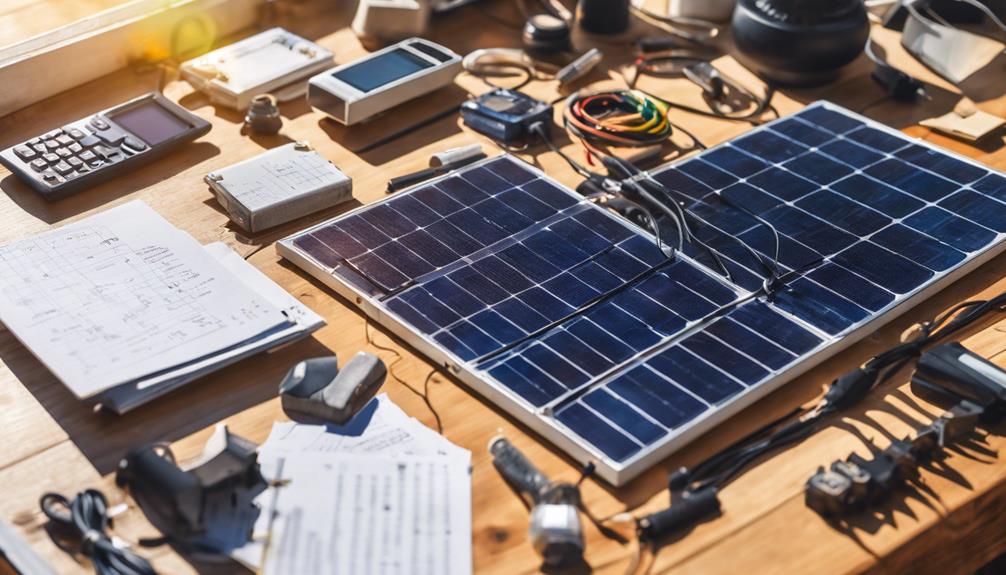
“`html
Ground Mounts for Solar Panels: The Ultimate Guide
As the world shifts towards renewable energy, understanding the various methods of solar panel installation becomes crucial for homeowners and businesses alike. One popular option is the use of ground mounts for solar panels. This blog post will explore everything you need to know about ground mounts, including their benefits, installation processes, and maintenance considerations. By the end, you’ll have a comprehensive understanding of ground mounts for solar panels and their advantages in maximizing solar energy efficiency.
What Are Ground Mounts for Solar Panels?
Ground mounts for solar panels are structures designed to support solar panels at a fixed position on the ground. Unlike rooftop installations, ground mounts allow for optimal positioning of solar panels, ensuring they receive maximum sunlight throughout the day. Ground mounts can be either fixed or adjustable, with adjustable mounts allowing for seasonal angle changes to capture more sunlight. This flexibility makes ground mounts a popular choice for both residential and commercial solar installations.
Advantages of Ground Mounts for Solar Panels
There are numerous benefits to using ground mounts for solar panels. One of the primary advantages is the ability to optimize the angle of the panels. Ground mounts can be positioned and adjusted to capture the most sunlight, leading to higher energy production compared to rooftop installations. Additionally, ground mounts are less likely to be shaded by trees or buildings, further enhancing their efficiency. Another significant benefit is accessibility; ground-mounted systems are easier to clean and maintain than rooftop systems, which can be hard to reach and often require special equipment.
Choosing the Right Location for Your Ground Mount System
When considering ground mounts for solar panels, location is key. You’ll want to select a site that receives ample sunlight throughout the day and is free from obstructions such as trees, buildings, or other structures. A south-facing location is typically ideal for solar panel installations in the Northern Hemisphere, as it maximizes sun exposure. Additionally, ensure that the selected site has stable ground and is not prone to flooding or erosion. It’s also essential to check local zoning regulations and obtain any necessary permits before proceeding with installation.
Types of Ground Mounts for Solar Panels
There are several types of ground mounts for solar panels, each with its unique features and benefits. The two main categories are fixed mounts and adjustable mounts. Fixed mounts are stationary and set at a specific angle, which is determined based on the geographic location of the installation. On the other hand, adjustable mounts, or tracking systems, can change their angle throughout the day to follow the sun’s path, resulting in increased energy production. While adjustable mounts tend to be more expensive, they can provide greater efficiency and energy output over time.
The Installation Process for Ground Mounts
Installing ground mounts for solar panels involves several steps. First, you’ll need to conduct a site assessment to determine the best location and orientation for your solar panels. Once the site is selected, the next step is to secure the necessary permits and approvals. After obtaining permits, the installation can begin, usually involving the following steps: digging holes for the mounting posts, setting the posts in concrete, attaching the mounting structure, and finally, installing the solar panels. It’s advisable to hire a professional solar installer to ensure that the system is set up correctly and efficiently, as improper installation can lead to decreased performance.
Maintenance Tips for Ground Mounted Solar Systems
Maintaining ground mounts for solar panels is crucial for ensuring optimal performance and longevity. Regular maintenance includes cleaning the panels to remove dirt, debris, and snow, which can obstruct sunlight and reduce energy output. It’s also important to inspect the mounting structure and connections periodically to ensure everything is secure and free from corrosion. Additionally, keeping the vegetation around the solar array trimmed can prevent shading and ensure maximum sunlight exposure. Regular maintenance can help extend the lifespan of your solar system and maintain its efficiency.
Cost Considerations for Ground Mounts for Solar Panels
The cost of ground mounts for solar panels can vary widely based on several factors, including the type of mounting system, the complexity of the installation, and local labor rates. Generally, ground-mounted systems tend to be more expensive than rooftop systems due to the additional materials and labor involved. However, the long-term savings on energy bills and the potential for increased efficiency can make ground mounts a worthwhile investment. Various incentives and rebates may also be available to offset the initial costs, so it’s essential to research local programs that support solar energy installations.
Conclusion: Is a Ground Mount System Right for You?
Ground mounts for solar panels offer a versatile and efficient solution for harnessing solar energy, especially for those with adequate outdoor space. They provide benefits such as improved accessibility for maintenance, optimal sunlight exposure, and the potential for higher energy production. However, it’s crucial to consider your specific circumstances, including site conditions, budget, and energy needs, before making a decision. By thoroughly researching and understanding ground mounts for solar panels, you can make an informed choice that best suits your energy goals and contributes to a more sustainable future.
“`
This blog post is structured to provide valuable information while optimizing for SEO using the keyword phrase “ground mounts for solar panels” and related terms. Each section is designed to be informative and engaging, catering to readers interested in solar energy solutions.





